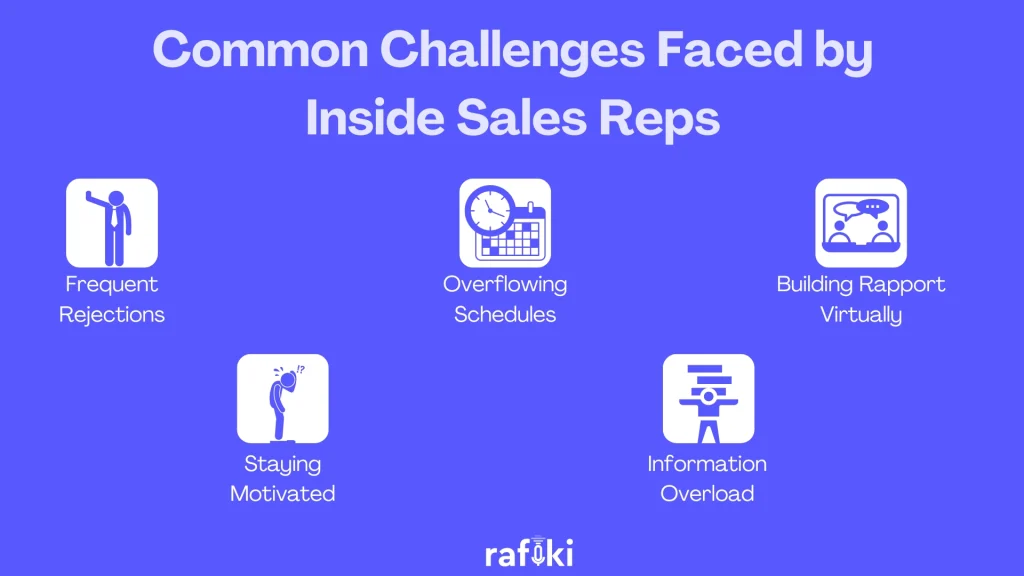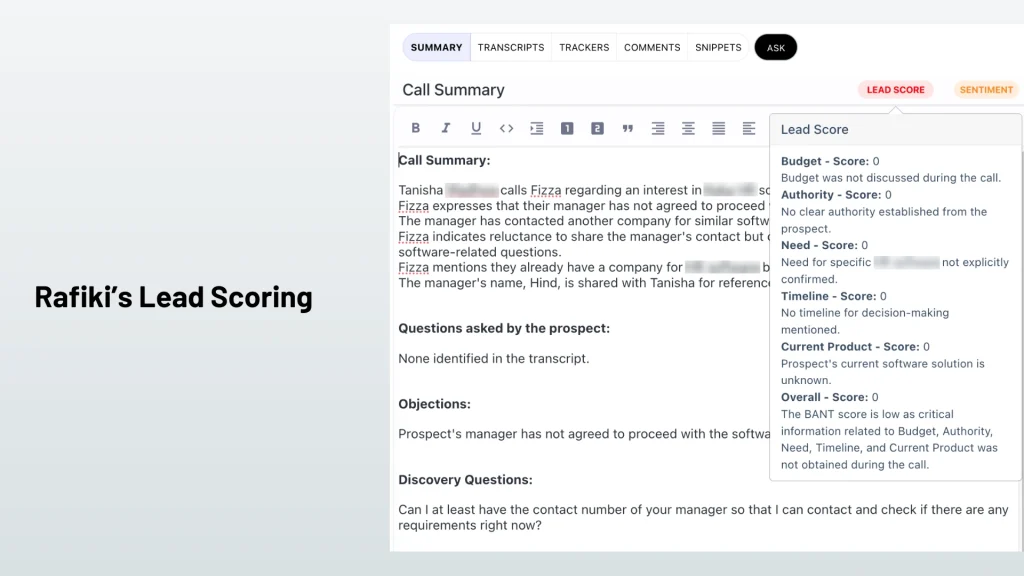Why Rafiki
Pricing


Pricing
Solutions

RevOps Leaders
Synchronize revenue generating functions

SDR Leaders
Get your team aligned and Coach your Reps 3x faster at scale

Sales Leaders
Unlock pipeline truth, drive confident forecasts

Sales roles come in many flavors. And that’s a good thing. If someone in your team isn’t doing well with outside/field sales, well, not all hope is lost for them. They might be a natural at inside sales.
Inside sales is most popularly used by tech companies, especially SaaS, and several B2C industries. So let’s dive into this exciting world, exploring the secrets of their success and the cutting-edge tools that empower them.
Inside sales is a rapidly growing field that's transforming the way businesses close deals. These sales representatives work remotely, building relationships and driving sales primarily through phone, email, and video conferencing. This remote approach offers distinct advantages like wider reach, cost-effectiveness, and access to real-time data.

But what exactly does these reps do, and how does their role differ from traditional sales methods like telemarketing?
While both inside sales and telemarketing involve reaching out to potential customers remotely, their approaches diverge significantly.
Inside sales reps act as trusted advisors, fostering relationships and understanding prospects' needs through in-depth conversations. They leverage digital tools like email, video conferencing, and sales intelligence platforms to present solutions that address specific pain points. In contrast, telemarketing often focuses on transactional interactions, with a script-driven approach aimed at quickly qualifying leads or generating appointments for outside sales teams.
For instance, imagine an inside sales rep for a software company. They might use Rafiki, a conversation intelligence platform, to analyze calls with prospects, automatically capture key information like budget and timeline, and even suggest relevant follow-up questions based on the conversation. This data-driven approach allows them to tailor their pitch and build genuine connections, ultimately driving higher conversion rates.
While both inside and outside sales representatives share the ultimate goal of driving revenue, their approaches and responsibilities differ significantly.
Travel Requirements: Inside sales reps typically work remotely, conducting business through phone calls, video conferencing, and email. This eliminates the need for travel and allows them to connect with a wider range of prospects more efficiently. In contrast, outside sales reps spend a considerable amount of time traveling to meet clients face-to-face, forging deeper personal connections and building rapport.
Customer Interaction: Inside sales reps often handle the earlier stages of the sales funnel, focusing on lead generation, qualification, and nurturing relationships. They rely heavily on digital communication tools to present solutions and address prospect needs. Outside sales reps typically engage with qualified leads later in the sales cycle, where in-person presentations, demonstrations, and closing deals become crucial.
Sales Cycle Stages: Inside sales reps generally manage a higher volume of leads at various stages of the sales funnel. They may qualify leads, move them closer to a purchase decision, and then hand them off to outside sales reps for finalization. Outside sales reps, on the other hand, focus on closing deals with qualified leads, often requiring more in-depth product knowledge and strong negotiation skills.
Inside sales reps are the driving force behind the scenes, orchestrating the initial stages of the sales funnel. Their core responsibilities encompass:

Inside sales offer several compelling advantages for businesses of all sizes:
Cost-Effectiveness: Eliminating travel expenses associated with outside sales significantly reduces operational costs. This allows businesses to scale their sales efforts more efficiently, reaching a wider audience without breaking the bank.
Wider Reach and Access to Potential Customers: Inside sales reps can connect with prospects anywhere in the world, transcending geographical limitations. This opens doors to new markets and customer segments that might be inaccessible through traditional outside sales channels.
Improved Data Tracking and Sales Insights: Digital communication tools used in inside sales generate valuable data on prospect interactions, lead behavior, and performance. Tools like Rafiki can analyze call recordings and automatically capture key information in your CRM, providing actionable insights to optimize sales strategies and improve conversion rates.
Inside sales isn't just a job; it's a springboard for diverse career paths within the sales organization. Strong performers can progress to:
Beyond the traditional hierarchy, inside sales reps can leverage their communication and relationship-building skills to excel in:
With a foundation in inside sales, individuals can carve their own path within the dynamic world of sales and business development.
The landscape of inside sales is constantly evolving, driven by the emergence of powerful technologies that are transforming the way reps work and interact with prospects. Here are some key trends:

Inside sales is a rapidly growing field that offers a dynamic and rewarding career path. By understanding the key differences between inside and outside sales, mastering the essential skills required for success, and leveraging the power of technology, these reps can play a vital role in driving business growth and building strong customer relationships.
As the industry continues to evolve, embracing emerging trends and tools like Rafiki will be crucial for inside sales teams to stay ahead of the curve and achieve even greater success.
Supercharge Your Inside Sales Team